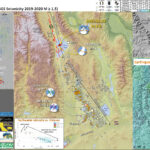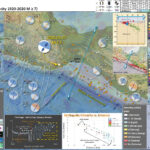Well, the east side of the Sierra lives up to its reputation for being in earthquake country. From the July 2019 Ridgecrest Earthquake Sequence (reports here)to some shakers east of Mono Lake, to the May 2020 Monte Cristo Earthquake Sequence…
Earthquake Report (and Tsunami) Oaxaca, Mexico
Well, it has been a busy couple of weeks. On 18 June, here was a M 7.4 earthquake in the Pacific plate along the Kermadec trench north of New Zealand which generated a small tsunami, even though it was a…


